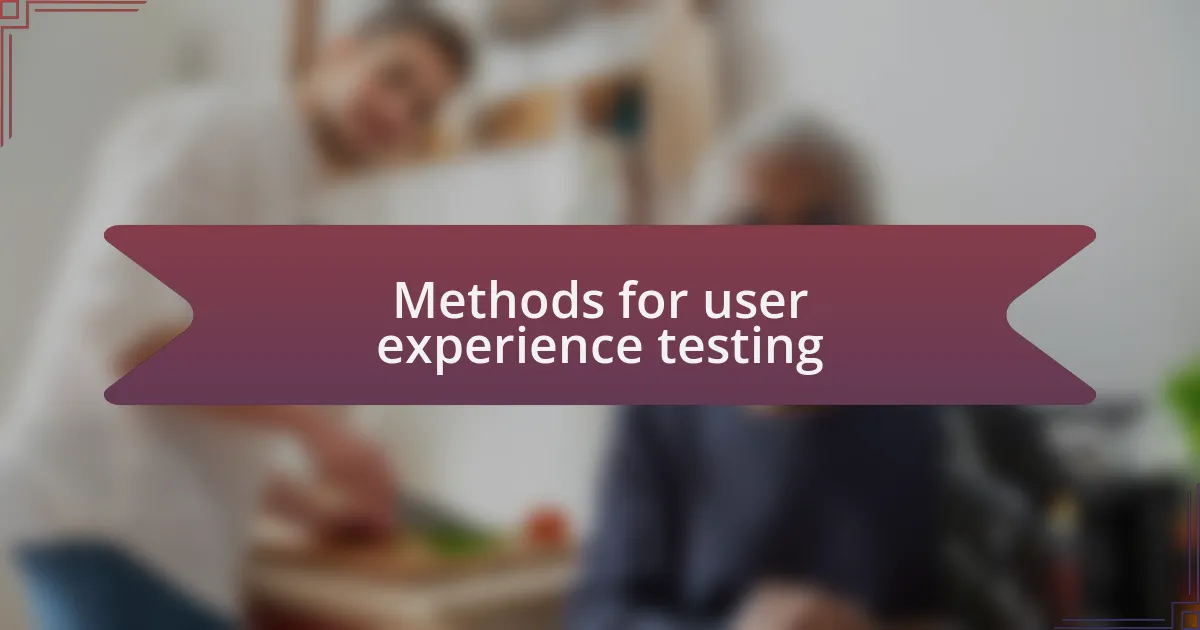Key takeaways:
- User experience testing reveals how real users interact with products, uncovering assumptions developers may have.
- Usability testing and remote testing provide valuable insights into user behavior and preferences.
- A/B testing can significantly enhance product effectiveness through minor changes, as shown by a successful color adjustment.
- Empathy for users is crucial for creating functional and enjoyable products, as user feedback highlights their frustrations.

Understanding user experience testing
User experience testing is all about understanding how real users interact with your website or application. I remember one project where our testing revealed that users struggled to find a critical feature hidden in a dropdown. That was a pivotal moment, as it highlighted how assumptions we make as developers might not reflect the actual user mindset.
When I conduct user experience testing, I often feel a mix of excitement and apprehension. It’s intriguing to see users engaging with the product, but it’s also a bit nerve-wracking to watch them encounter obstacles. Have you ever observed someone using a tool you designed? It’s eye-opening to see firsthand how small changes can significantly impact usability.
Ultimately, user experience testing empowers us to refine our designs. It’s not just about gathering data; it’s about tapping into the emotions and frustrations users experience. I once had a user exclaim in frustration about an unclear button – that moment underscored the importance of empathizing with our audience to create products that are not only functional but also genuinely enjoyable to use.

Methods for user experience testing
When considering methods for user experience testing, I find usability testing to be one of the most revealing techniques. By observing users in a controlled environment as they complete set tasks, I gain valuable insights into their thought processes and pain points. I recall a project where usability tests turned my assumptions upside down; what I thought was a straightforward navigation flow baffled many testers, highlighting the necessity of clear visual cues.
Another method that I often employ is remote testing, which allows me to gather feedback from a broader audience without geographical constraints. This approach can deliver rich qualitative data through video recordings and behavioral analytics. I remember feeling excited when a tester from a different country shared how they navigated our website. Their unique perspective taught me about cultural nuances that I hadn’t considered, greatly enriching our design process.
A/B testing holds a special place in my toolkit as it enables me to compare different versions of a page or feature to see which performs better. By presenting variations to users and analyzing their interactions, I can pinpoint what resonates most effectively. I still think back to a time when a simple color change on a call-to-action button resulted in a significant increase in conversions—proof that even minor adjustments can lead to major outcomes. What methods have you found to be most impactful in your experience?